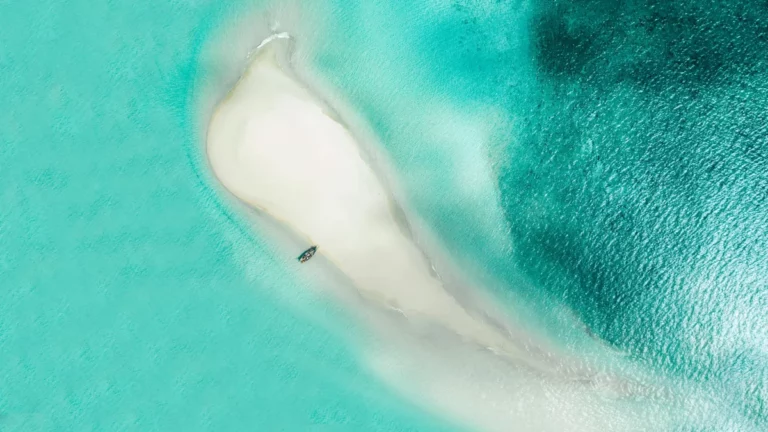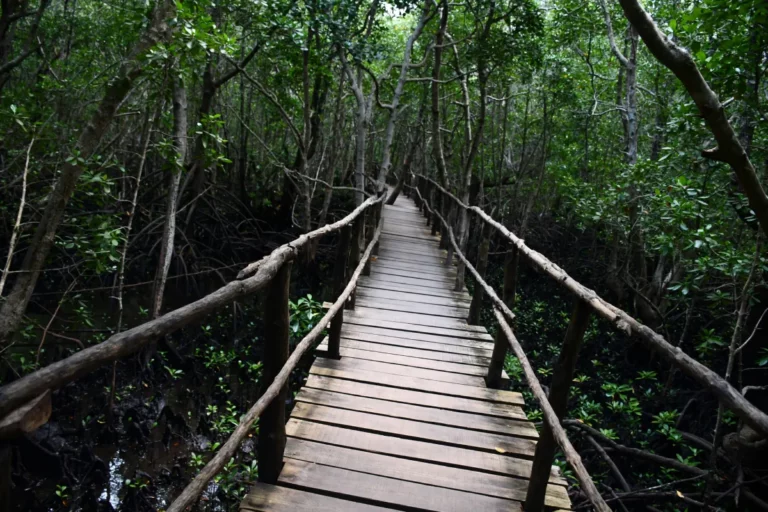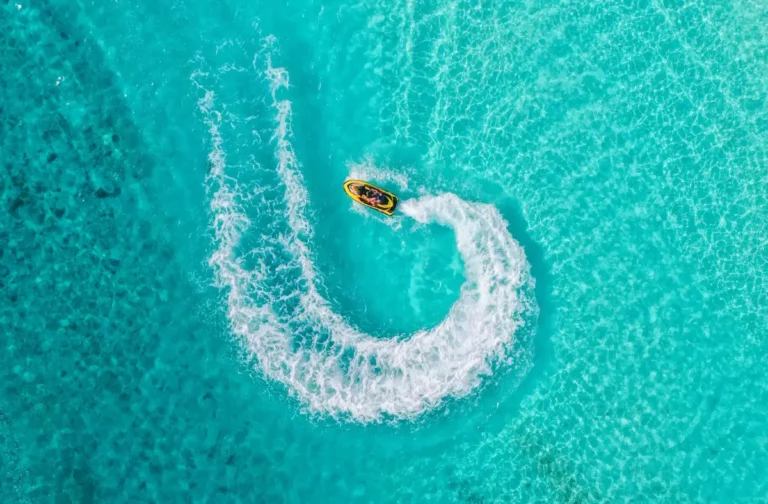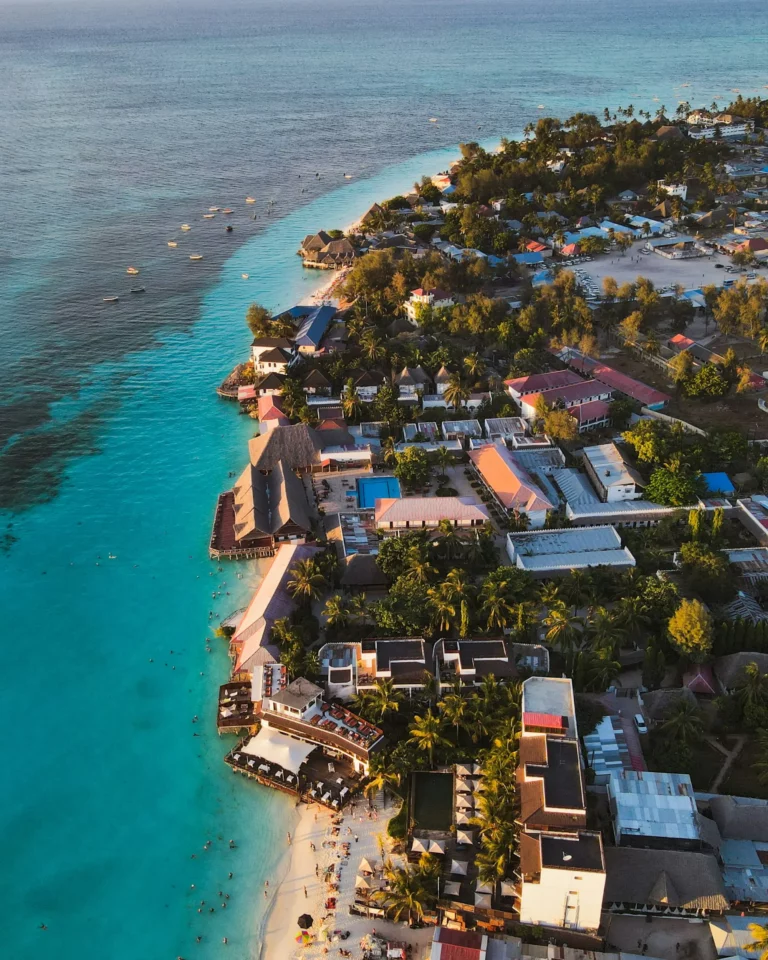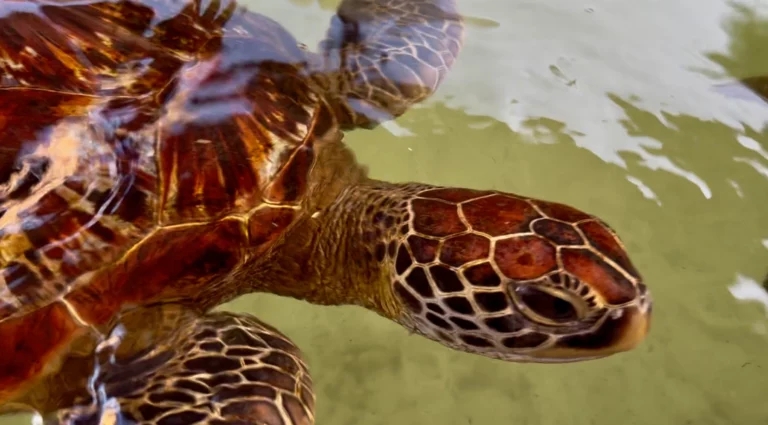5 Spellbinding Cave Swimming Journeys in Zanzibar: Unveil Hidden Legends
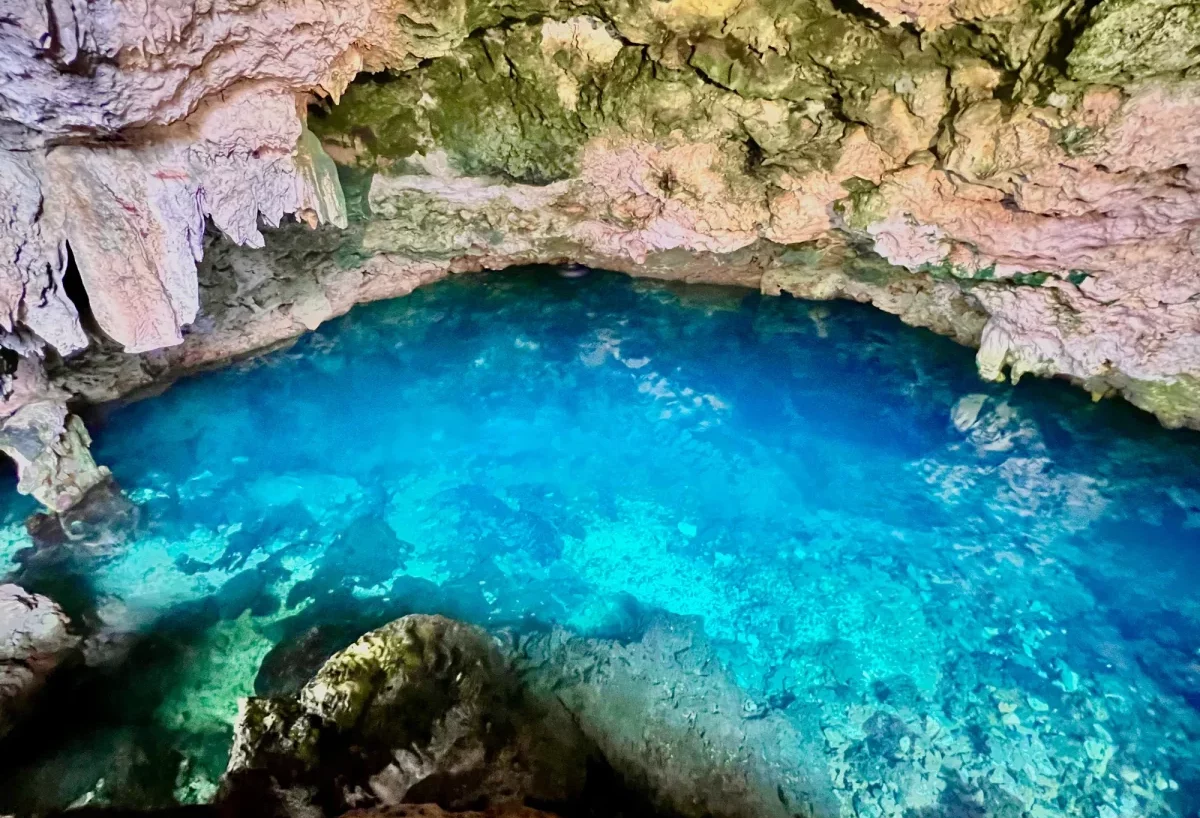
Zanzibar’s rugged coastline offers far more than sun-drenched beaches and sparkling turquoise waters. Beneath the island’s surface lies a network of natural cave pools that have captivated both locals and travelers for centuries. These subterranean oases, formed over millennia by the process of karstification—where rainwater slowly dissolves soft coral limestone—serve as a window into the island’s dynamic geological past. Over time, the gradual erosion has sculpted these remarkable features, transforming hidden pockets of water into extraordinary sites for cave swimming.
Each cave pool on Zanzibar holds its own distinct geological history and cultural significance. Some, like Maalum and Kuza, reveal intricate limestone formations that have been preserved through natural processes dating back hundreds of thousands of years. Others, such as Kiwengwa and Salaam, are steeped in local lore and have served as refuges or ceremonial sites throughout the region’s history. This blend of ancient mystery and modern eco-adventure makes exploring these caves a unique way to experience both the natural and cultural heritage of the island.
As tourism continues to grow on Zanzibar, these hidden gems are rapidly gaining popularity among global travelers. Increasing demand means that access to these pristine sites is becoming more competitive, and exclusive experiences are likely to be booked months in advance. For those seeking to connect with Zanzibar’s timeless beauty and rich traditions, now is the time to dive in and secure your place in these extraordinary natural wonders.
Table of Contents
Unearthing Legends: Captivating Histories & Immersive Adventures
Maalum Cave: A Private, Dreamlike Escape in Paje

Tucked away behind a modest wooden gate in the Paje region, Maalum Cave stands as one of Zanzibar’s best-kept secrets. As you pass through its entrance, you enter a cinematic world defined by high limestone walls and a crystal-clear pool that shimmers with a deep aquamarine glow.
Captivating Natural Retreat
The water in Maalum Cave is so pure that every ripple reveals the intricate contours of the ancient limestone floor. Ideal for cave swimming, it is cool enough to invigorate after a day in the sun while still offering a gentle, meditative float. Subtle, eco-friendly lighting bathes the interior in a dreamlike glow, extending the magic well into dusk. Private bookings mean you can enjoy this oasis in complete solitude—whether for a romantic photoshoot, a quiet solo swim, or an intimate celebration.
A Geological Masterpiece
Formed over thousands of years through the gradual process of karstification—where rainwater slowly dissolves soft coral limestone, Maalum is a pristine example of karst topography. Its natural formation is not only a geological marvel but also a silent witness to Zanzibar’s evolving landscape, preserved in time and ready to share its secrets with those who seek them.
Kuza Cave: A Mystical Journey in Jambiani

Invigorating Aquatic Escape
Situated just off the main road through Jambiani village on Zanzibar’s southeast coast, Kuza Cave offers an immediate contrast to the sun-baked beaches: a cool, subterranean retreat. The central pool averages 2 meters in depth, with water temperatures hovering around 24–26 °C, making it ideal for a revitalizing cave swim. Natural light filters through a fissure overhead, spotlighting the water’s mirror-like surface and revealing the fine coral limestone floor below. After exploring Jambiani’s bustling markets or relaxing on its powdery white sands, a dip in Kuza Cave’s clear waters delivers both physical refreshment and mental rejuvenation. Guided visits typically include a brief safety orientation and background on local conservation initiatives, ensuring swimmers leave the site as stewards of its preservation.
Ancient Earth Narratives
Kuza Cave’s formation dates back more than 250,000 years, during a period when rising and falling sea levels repeatedly reshaped Zanzibar’s shoreline. Over time, slightly acidic rainwater percolated through fractures in the island’s coral limestone, dissolving rock and carving out underground passages. As chambers expanded, portions of the cave ceiling collapsed, opening the grotto to daylight. Today, visitors can observe flowstone deposits that grow at a rate of approximately 0.1 mm per year, as well as fossilized shell fragments embedded in the walls—evidence of the coral reef that once thrived above. These geological features make Kuza Cave a living classroom for understanding karst processes and the island’s paleoenvironment.
Sacred Traditions Uncovered
Archaeological excavations in and around Kuza Cave have uncovered Swahili-era pottery shards, iron tools, and beads dating to the 14th century, indicating its longstanding role as a communal gathering site. Local Swahili oral histories describe Kuza as a place of prayer and healing, where Sultans’ emissaries would perform rituals for rain and fertility. Today, the adjacent Kuza Cultural Centre hosts the Swahili House Museum, featuring these artifacts alongside displays on traditional dhow building and spice cultivation. Weekly drumming sessions use the kitanzi (three-stringed lute) and ngoma (drum) to reenact ancestral rhythms believed to resonate with the natural acoustics. Through these programs, visitors gain direct insight into how Kuza Cave has shaped—and been shaped by—centuries of island life.
Kiwengwa Cave: A Subterranean Wonderland of Echoes and Legends
Rugged Explorations

Found along Zanzibar’s east coast, Kiwengwa Cave offers an immersive journey into a labyrinth of ancient rock formations and echoing chambers. The cave pool is notably less developed and more rugged than its counterparts, inviting adventurous visitors to navigate its winding passageways and discover hidden pools carved naturally over millennia. The cool, dark interior provides a stark, refreshing contrast to the island’s sunlit shores. Visitors can engage in gentle cliff jumping or simply explore the natural corridors, where every footstep resonates against the stone walls, offering both a physical and sensory adventure into the depths of this subterranean wonder.
Timeless Traditions
Kiwengwa Cave is steeped in local lore and cultural significance. Historically, it served as a refuge during periods of conflict and as a ceremonial site for spiritual rituals. Faded cave paintings and ancient markings on the walls offer evidence of its long-standing importance in local traditions, hinting at communal celebrations and rituals that once took place within these chambers. Today, guided tours led by local elders provide context to these symbols and share detailed narratives of the past, ensuring that visitors gain a deeper understanding of the timeless traditions that have shaped the cultural landscape of Zanzibar.
Salaam Cave: An Intimate Encounter with Nature and Wildlife
Wild Encounters
Situated in one of Zanzibar’s more secluded regions, Salaam Cave offers an intimate cave swimming experience that uniquely combines natural beauty with wildlife encounters. The shallow, crystal-clear waters create a perfect natural pool for snorkeling and leisurely floats. Its minimal development ensures that no commercial distractions interfere, allowing visitors to truly connect with the pristine environment. This undisturbed setting not only enhances the clarity of the water but also accentuates the raw, untouched character of the cave, making each swim feel like a personal escape into nature’s secret retreat.
Guardians of the Legend
Local fishermen and elders in Zanzibar assert that the turtles inhabiting Salaam Cave serve as spiritual guardians of the area. According to long-held Swahili traditions, these turtles are believed to protect the pristine waters and maintain the balance of its natural ecosystem. This belief is rooted in the idea that natural features—such as caves, trees, and animals—are sacred and carry the blessings of ancestral spirits. Locals consider the presence of these turtles a sign of good fortune and a reminder of the community’s responsibility to preserve their environment. For visitors, swimming alongside these creatures offers a tangible connection to these enduring cultural practices, transforming a simple dip into a meaningful encounter with Zanzibar’s living heritage.
Kuumbi Cave: An Archaeological Treasure and Cultural Sanctuary

Rugged Exploration
Kuumbi Cave, on Zanzibar’s southeastern coast, offers a unique cave swimming experience marked by its rugged natural setting. Visitors can explore vast chambers filled with stalactites and stalagmites, and swim in natural pools that vary with seasonal water levels. The environment here is raw and unrefined, emphasizing the powerful natural forces that shaped the cave over millennia. Swimming in Kuumbi Cave provides an opportunity to witness the interplay of water and rock, offering both physical exhilaration and a direct connection to the island’s prehistoric landscape.
Archaeological and Historical Significance
Kuumbi Cave has a documented archaeological record dating back over 20,000 years. Excavations have uncovered tools, animal bones, and evidence of ancient fires, indicating that the place served as both a shelter and a site for spiritual activities by early inhabitants. These findings contribute to our understanding of human adaptation and survival in the region. In addition to its physical remnants, local communities maintain traditions and legends that reference Kuumbi as a place of ancestral significance. These historical insights make Kuumbi Cave an essential destination for those interested in the convergence of natural beauty and deep-rooted human history.
Essential Visitor Tips for Cave Swimming in Zanzibar
Timing
The optimal period to visit Zanzibar’s cave pools is during the dry season, typically spanning from June to October and December to February. During these months, average daily temperatures remain steady around 25-30°C with significantly reduced rainfall, resulting in stable water levels within the caves. Lower precipitation minimizes water runoff, which not only helps maintain clear, undisturbed natural pools but also ensures that sediment and turbidity remain low—leading to excellent visibility.
Furthermore, the absence of heavy rain means that natural light penetrates deeper into the cave systems, accentuating the detailed limestone formations and enhancing overall water clarity. The consistent weather conditions of the dry season also make exploring the rugged terrain surrounding these cave pools safer and more comfortable for visitors.
What to Bring
Swimsuit
Bring a comfortable, quick-drying swimsuit designed for active water sports. This type of suit allows unrestricted movement in the water and dries rapidly, reducing discomfort after your swim.
Water Shoes
Pack a sturdy pair of water shoes to provide extra traction on slippery, rocky surfaces. These shoes also protect your feet from sharp edges and rough terrain commonly found inside the caves.
Towel
A lightweight, fast-drying towel is essential for drying off quickly after exiting the water. Quick-dry towels are practical for maintaining comfort and hygiene during your adventure.
Waterproof Flashlight or Headlamp
Since some sections of the caves have limited natural light, a reliable waterproof flashlight or headlamp is necessary for safe navigation. A headlamp is particularly useful, as it frees your hands while illuminating darker areas.
Dry Bag
A dry bag is invaluable for protecting electronics, cameras, and other personal items from water damage. Secure storage in a dry bag ensures that you can document your experience without worry.
Guided Tours
Many of Zanzibar’s cave pools, especially those like Kuza and Kiwengwa, are best explored with the assistance of a knowledgeable local guide. These experts can offer invaluable insights into the geological history of the island, explain the cultural significance of the sites, and share fascinating local legends. Guided tours also enhance your safety by ensuring you navigate the often complex and uneven terrain with confidence. Furthermore, these tours contribute to the local economy and help preserve the sites by promoting responsible and sustainable tourism practices.

Respect the Environment
Adhere to Local Customs
Recognize that these pools are considered sacred by local communities. Follow any guidelines provided by your guide and respect the customs observed at the site. This respect helps maintain the cultural integrity of the area.
Avoid unnecessary noise
Minimize noise to preserve the serene atmosphere of the caves and reduce disturbances to wildlife. Keeping a low profile ensures that the natural ambiance and the peaceful experience remain undisturbed for everyone.
Be a responsible tourist
Pack out everything you bring in and avoid touching delicate formations. Refrain from littering to help protect both the natural beauty and the cultural heritage of these sites, ensuring they remain intact for future visitors.
Plan Ahead
Book Early
Cave swimming in Zanzibar is increasingly popular among travelers seeking unique, off-the-beaten-path adventures. Exclusive experiences, such as private sessions at Maalum and guided tours at Kuza, tend to fill up quickly, particularly during the peak dry season. It is advisable to check availability and secure reservations well in advance to ensure you can access these sought-after sites.
Stay Informed
Local tourism websites and tour operators provide up-to-date information on access, pricing, and seasonal changes that may affect your visit. Monitoring these sources regularly helps you plan effectively and adjust your itinerary according to current conditions.
Consider Local Recommendations
Engaging with local tourism experts can offer personalized advice and insider tips, ensuring you make the most of your cave swimming experience. Their knowledge about the best times to visit, optimal routes, and hidden spots can enhance your adventure while helping you respect the cultural and natural significance of the sites.
Following these steps will ensure that your exploration of Zanzibar’s hidden cave pools is both safe and rewarding.
Dive In Now Before It’s Booked Out
A Transformative Adventure
Cave swimming in Zanzibar is far more than a leisurely dip—it is an immersive experience that connects you directly with the island’s rich geological formations and cultural heritage. Each cave pool offers a distinct perspective: from the secluded serenity of Maalum, where private sessions allow for quiet reflection, to the mystical depths of Kuza, where ancient rock formations provide a glimpse into early Swahili life; from the adventurous corridors of Kiwengwa, lined with faded rock art and steeped in local legends, to the intimate wildlife haven of Salaam Cave, where encounters with native turtles add a unique cultural layer.
This diverse array of sites invites you to engage with nature and history in a way that few other destinations can offer.
Go now before it’s fully booked
With the rising popularity of these cave pools among global travelers, the window to experience them in their raw, untouched state is narrowing. As more adventurers seek out these hidden oases—especially during the dry season when conditions are ideal—reservations for exclusive swims, guided tours, and even traditional healing sessions are beginning to book out weeks or even months in advance. What was once a well-kept secret is rapidly becoming a must-see, and this shift in accessibility highlights just how vital it is to plan your visit ahead of time.
But there’s more at stake than timing. Choosing to visit now isn’t just about securing your own unforgettable experience—it’s also a conscious act of support for sustainable tourism. Many of these cave sites are managed by local communities and conservation-minded operators, and each visitor contributes directly to the preservation of these fragile ecosystems and the cultural heritage they embody. It’s about respecting the land, the legends, and the people who have kept these sacred spaces alive for generations.
By diving into this ethereal world where ancient Swahili mysticism meets modern-day exploration, you’re not just taking a swim—you’re immersing yourself in one of Zanzibar’s most captivating natural wonders. It’s a visceral, otherworldly experience that lingers long after your skin dries and the echoes fade. This is more than a destination—it’s a passage into the island’s soul.

